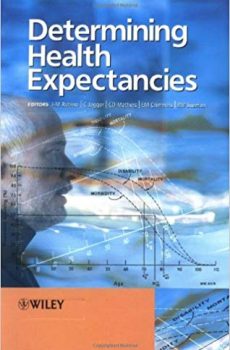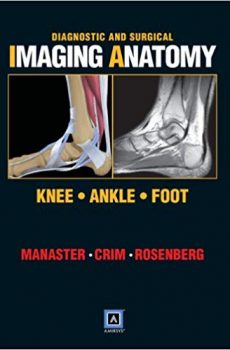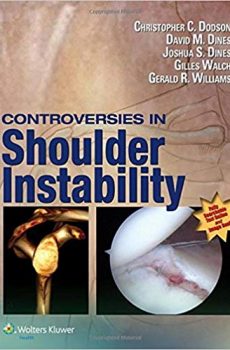
Controversies in Shoulder Instability
19,900.00₹ 5,900.00₹
Shoulder instability can result from a variety of causes—including bone loss, lesions, and trauma, particularly repetitive motion injuries associated with sports. This practical resource addresses the full scope of shoulder injury diagnosis and management—from anatomy and natural history, to injury classification and both surgical and nonsurgical management options.
- Emphasis on current controversiesallows readers to weigh opposing viewpoints and choose the best management strategy for first-time dislocators, multi-directional shoulder instability, stabilization of injuries in a contact athlete, management of SLAP tears, treatment of shoulder injuries in the elderly, and more!
• Multiple techniques are presented for key disorders allowing readers to select the most appropriate management strategy for each patient.
• Step–by–step coverage of each procedureensures proper technique, minimizes error, optimizes results, and reduces post-surgical recovery times.
• Helpful illustrations highlight key concepts from the text.
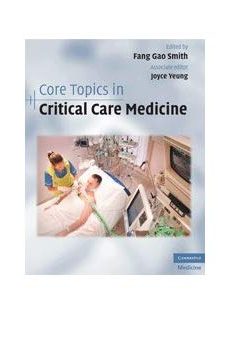
Core Topics in Critical Care Medicine
8,999.00₹ 2,690.00₹
The critical care unit manages patients with a vast range of disease and injuries affecting every organ system. The unit can initially be a daunting environment, with complex monitoring equipment producing large volumes of clinical data. Core Topics in Critical Care Medicine is a practical, comprehensive, introductory-level text for any clinician in their first few months in the critical care unit. It guides clinicians in both the initial assessment and the clinical management of all CCU patients, demystifying the critical care unit and providing key knowledge in a concise and accessible manner. The full spectrum of disorders likely to be encountered in critical care are discussed, with additional chapters on transfer and admission, imaging in the CCU, structure and organisation of the unit, and ethical and legal issues. Written by Critical Care experts, Core Topics in Critical Care Medicine provides comprehensive, concise and easily accessible information for all trainees.
- Wide-ranging content encompasses the full spectrum of disorders encountered on the unit
- Written by expert trainers who know how to present the complex critical care environment in an accessible style
- Final chapter gives examples of mock MCQs and vivas in critical care to assist trainees preparing for examinations in Critical Care
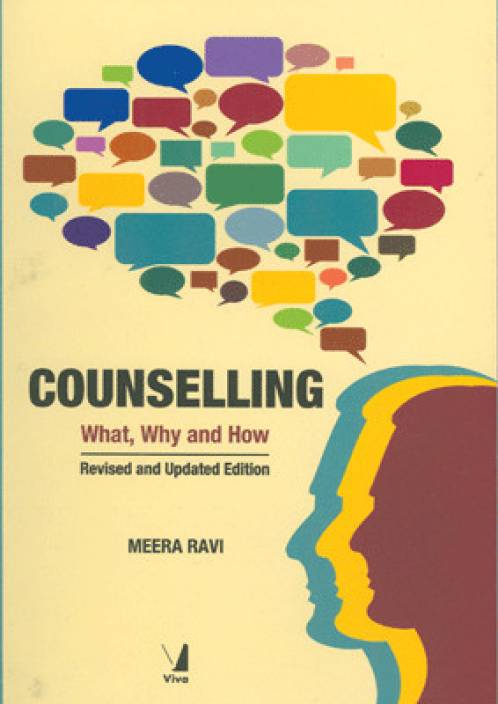
Counselling: What, Why And How
295.00₹ 195.00₹
Counselling can be the answer to several problems like poor self-esteem, lack of control over your life, difficulty making decisions, grief, anxiety, depression and difficult relationships. Or people may go for counselling just to improve their life, Dispelling the myths about counselling, Meera Ravi explains why it is not just ‘comforting’ and how it can be a way to self-discovery. About the Author: Meera Ravi is a qualified family counsellor, and she runs the Prerana Academy for Growth and Guidance, Bangalore. She conducts workshops for Children, parents and teachers. She is the author of A Guide to Study Skills and Teaching through the Heart, also published by Viva. Contents: Acknowledgement Preface Introduction to self-awareness Difference between counselling and psychotherapy History of counselling and psychotherapy Perceptions about counselling Counselling in India What is counselling? How does counselling work? Benefits of Counselling What Counselling Isn’t Why go for counselling? Do’ normal’ people need counselling? How will talking help? How will a person know if he should seek to counsel? What are the problems that can be solved’ by counsel If I don’t Seek help what will happen? Will the counsellor advise you what to do? How long does therapy/counselling take to work? How to choose a counsellor? How Should an effective counsellor make you feel? Qualities of a counsellor Evaluation of your relationship with the counsellor Did you, thank the counsellor for your growth? Your rights and responsibilities
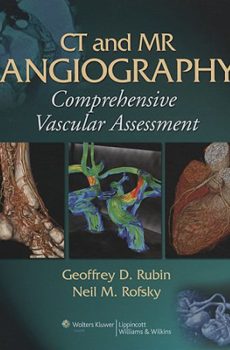
CT and MR Angiography Comprehensive Vascular Assessment
16,990.00₹ 3,900.00₹
Written by world-renowned experts in both CT angiography and MR angiography, this landmark work is the first comprehensive text on vascular imaging using CT and MR. It provides a balanced view of the capabilities of these modalities and practical guidelines for obtaining and interpreting images. More than 2,200 illustrations complement the text. Chapters co-authored by CT and MR authorities cover imaging of all coronary and non-coronary arteries and veins. Each chapter details indications, imaging strategies, normal and variant anatomy, diseases, surgical management, and pitfalls. The authors compare the utility of CT and MR in specific clinical situations and discuss the role of conventional angiography and ultrasound where appropriate
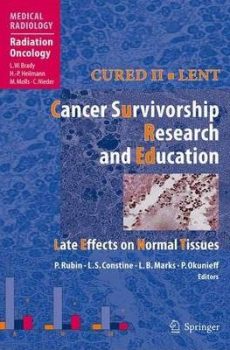
Cured II – LENT Cancer Survivorship Research And Education
9,995.00₹ 1,925.00₹
Multimodal treatment lies at the heart of the improvement in cancer cure rates. However, the more aggressive the treatment, the more adverse effects in normal tissues can be anticipated. Against this background, a major paradigm shift has taken place in that there is a new focus on cancer survivorship and quality of life: the life worth saving must be worth living. This volume is based on the CURED II conference held in May 2007, which was attended by scientists from many leading institutions. The volume comprises 18 chapters by leading experts who address a variety of important topics relating to late treatment effects, such as mechanisms and evolution of injury, risk factors, the role of screening, options for interventions, second malignancies, and prevention. It is hoped that it will assist the reader in understanding how to prevent and treat the long-term side-effects of irradiation, thus improving the quality of life of long-term survivors of cancer.
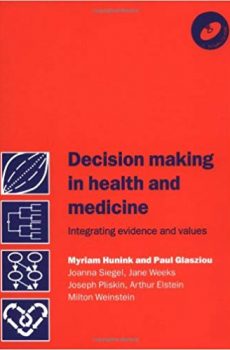
Decision Making in Health and Medicine
8,990.00₹ 1,565.00₹
Decision making in health care involves navigating through a complex and tangled web of diagnostic and therapeutic uncertainties, patient preferences and values, and costs. Medical therapies have side effects, surgery may lead to undesirable complications, and diagnostic technologies may produce inconclusive results. In many clinical and health policy decisions it is necessary to counterbalance benefits and risks, and to trade off competing objectives such as maximizing life expectancy vs optimizing quality of life vs minimizing the resources required. This textbook plots a clear course through these complex and conflicting variables. It clearly explains and illustrates tools for integrating quantitative evidence-based data and subjective outcome values in making clinical and health policy decisions. The book will be of immense practical value for all those charged with the responsibility of decision making in medicine, including practitioners and trainees, and for students studying clinical decision analysis, EB-medicine, and clinical epidemiology.
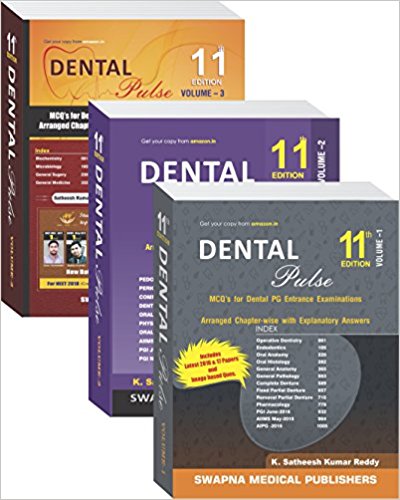
Dental Pulse 11ed Set – (Vol-1,Vol-2 & Vol-3 ) 2017
Rated 4.00 out of 5
4,250.00₹ 3,400.00₹
MCQ’s For Dental PG Entrance Examinations Arranged Chapter Wise-With Explanatory Answers
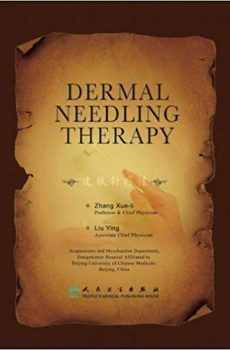
Dermal Needling Therapy
2,800.00₹ 2,200.00₹
This book introduces the fundamentals of dermal needling therapy, such as the principles of treatment, characteristics, indications, management of and precautions with accidents during treatment. It supplies the locations and the indications of commonly-used acupuncture points of the fourteen channels as well as extra points. It also outlines the principles for differentiating syndromes, treatment, point combination, and point selection, as well as presents the treatment for 86 common diseases in internal medicine, external trauma, orthopedics, gynecology, pediatrics, dermatology and otolaryngology. Each disease includes such parts as overview, cause and mechanism of disease, types of syndrome and treatment.
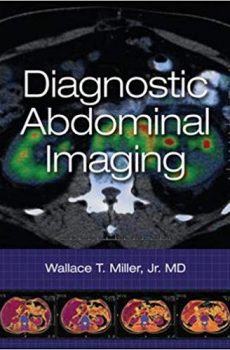
Diagnostic Abdominal Imaging
16,290.00₹ 9,790.00₹
Diagnostic Abdominal Imaging provides a comprehensive review of abdominal diseases based on pattern recognition. Utilizing more than 2,300 images, the book includes discussions of the x-ray, sonographic, CT, MRI, and nuclear radiology features of abdominal diseases. Since accurate imaging diagnosis of diseases can only be achieved with the appropriate clinical history, the characteristic clinical presentations of abdominal diseases are discussed in conjunction with the image findings.
Presented in fifteen organ-based chapters that highlight differentiation of disease on the basis of imaging patterns, Diagnostic Abdominal Imaging discusses the full spectrum of malignant and nonmalignant abdominal disorders. Each discussion begins with the most salient histologic, pathologic, and clinical features of the disorder under discussion. This is followed by a systematic review of the imaging features of the disease as seen by all modalities.
Unlike most radiology texts which are organized by pathology, Diagnostic Abdominal Imaging is organized by imaging appearance―mimicking real-world practice. The book guides you through the process of imaging-based diagnosis and stresses the epidemiological, clinical, and imaging features that allow the most accurate prediction of disease.
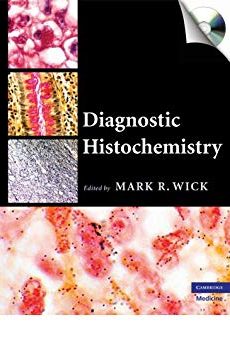
Diagnostic Histochemistry
12,995.00₹ 2,900.00₹
Pathology is an inherently subjective discipline, and therefore is often referred to as both an art and a science. Over the years, laboratory physicians have implemented special tissue stains and molecular techniques to limit subjectivity in the discipline. Beginning in the late 19th century, histochemical stains were developed to assess diagnostic biochemical reactions in tissue. Histochemistry has recently seen a resurgence in popularity because of the higher costs of other newer methods. Today, this technique is used by almost every pathology laboratory across the world.
This book comprehensively covers all diseases for which that technique plays a central role in diagnosis. Every anatomic region is covered in detail with examples of appropriate staining techniques, and the book is heavily illustrated with over 850 color photomicrographs. This is the first monograph to be published on histochemistry in 15 years, and it is the only one that is diagnostically-oriented.
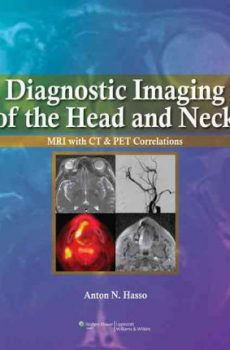
Diagnostic Imaging of the Head and Neck MRI with CT & PET Correlations
15,400.00₹ 3,490.00₹
A single-authored, clinically oriented text on imaging of the head-and-neck, frequently a difficult area for radiology residents and general radiologists to master. Readers will find key diseases highlighted and a guide to differential diagnosis of various conditions. Though the primary image focus is on MRI, correlations with CT and PET images and strong coverage of anatomic variants–to distinguish those from the presence of disease–are major strengths of the book. Other features include excellent image quality, diagrams and tables. While this text does not replace the need for a comprehensive text, it should be an essential resource at the reading station and on rotation.

Diagnostic Issues in Depression and Generalized Anxiety Disorder
4,900.00₹ 3,790.00₹
Generalized anxiety disorder (GAD) and major depression (MD) form the largest group of common mental disorders. These two conditions often occur together, and emerging evidence suggests several similarities between them. As we move toward revising the Diagnostic and Statistical Manual of Mental Disorders for DSM-V, Diagnostic Issues in Depression and Generalized Anxiety Disorder: Refining the Research Agenda for DSM-V explores the nosologic relationship between GAD and MD. In this comprehensive manual, more than 45 contributors cover a wide range of empirical and conceptual issues that face clinicians and researchers working with GAD and MD today. This book acts as a guidepost for the entire DSM process. It reviews recent scientific advances in our understanding of the interrelationship between GAD and MD, summarizes the body of evidence into a few broad conclusions, and reflects on the implications of these findings for future nosologic efforts. The contributing authors review empirical data from a variety of perspectives — including genetics, biology, treatment, development, course, predictors, disability, and psychosocial stressors — and then integrate results from research on all these diverse validators to come up with a single “bottom-line” recommendation regarding the relationship between GAD and MD. In addition, the book considers conceptual issues, such as criteria for results from validators, the relevance of results on symptoms of anxiety and depression, weights of different classes of validators, and the rules for assigning disorders into categories. And finally, it addresses the question of what new kinds of data could be gathered that would help to clarify the relationship between MD and GAD more definitively. Each chapter includes tables, charts, and references to enhance the evidence presented on such diverse topics as: A thorough review of the genetics of GAD and MD The role of psychotropics in distinguishing between GAD and MD Biological and treatment aspects of GAD and MD Psychometric aspects of GAD and MD Childhood risk factors associated with GAD and MD Common mental disorders across cultures Diagnostic Issues in Depression and Generalized Anxiety Disorder: Refining the Research Agenda for DSM-V develops operationalized criteria for nosologic decisions that enable clinicians to bridge the gap between data to diagnostic recommendations. Not only does the methodology of investigating an active interchange between empirical and conceptual perspectives shed new light on the relationship between GAD and MD, but it also carries implications for the rest of DSM-V.
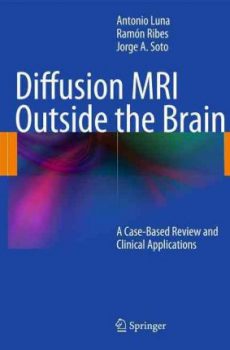
Diffusion MRI Outside the Brain
11,120.00₹ 8,700.00₹
Recent advances in MR technology permit the application of diffusion MRI outside of the brain. In this book, the authors present cases drawn from daily clinical practice to illustrate the role of diffusion sequences, along with other morphological and functional MRI information, in the work-up of a variety of frequently encountered oncological and non-oncological diseases. Breast, musculoskeletal, whole-body, and other applications are covered in detail, with careful explanation of the pros and cons of diffusion MRI in each circumstance. Quantification and post-processing are discussed, and advice is provided on how to acquire state of the art images, and avoid artifacts, when using 1.5- and 3-T magnets. Applications likely to emerge in the near future, such as for screening, are also reviewed. The practical approach adopted by the authors, combined with the wealth of high-quality illustrations, ensure that this book will be of great value to practitioners.
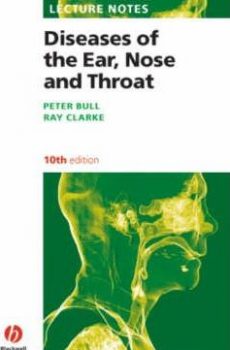
Diseases of the Ear, Nose & Throat
3,090.00₹ 1,595.00₹
Highly Commended in the ENT category at the British Medical Association Book Awards 2008
Lecture Notes: Diseases of the Ear, Nose and Throat, now in its tenth edition, is an ideal learning aid covering the core principles of this important specialty. With concise chapters, this text is renowned for its brevity, clarity and lavish illustrations. This edition has been thoroughly revised and rewritten to reflect the latest developments in the specialty and contemporary curriculum, and features:
- New material on otitis media, tonsils, voice disorders, head and neck cancer and obstructive sleep apnoea
- Coverage of relevant basic science at a level to assist the student to fully understand the clinical topic
- Clinical Practice Points which provide nuggets of wisdom about patient management
- Over 200 self-assessment questions to aid revision and understanding
- Emphasis on sensible primary-care management of common presentations
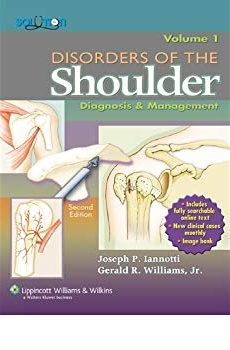
Disorders of the Shoulder: Diagnosis and Management
27,900.00₹ 14,890.00₹
Expanded to two volumes, Disorders of the Shoulder, Second Edition is a comprehensive, current, and authoritative clinical reference for residents, fellows, shoulder specialists, and general orthopaedic surgeons. This edition features greatly expanded coverage of arthroscopic treatment and hundreds of new full-color arthroscopic images. Arthroscopic and open techniques are integrated into all relevant disorder-specific chapters, so that readers can compare open to arthroscopic procedures and select the most effective treatment option. New chapters cover diagnosis of glenohumeral instability; management of bone and soft tissue loss in revision arthroplasty; minimally invasive techniques for proximal humeral fractures; hemiarthroplasty for proximal humeral fractures; and suprascapular and axillary nerve injuries. All clinical chapters include treatment algorithms and the authors’ preferred treatment. More than 2,400 illustrations–743 in full color–complement the text.
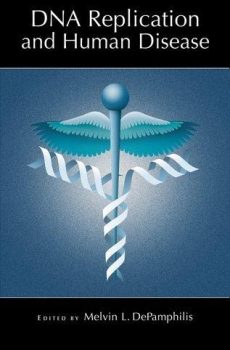
DNA Replication and Human Disease
9,700.00₹ 4,195.00₹
At least 5 trillion cell divisions are required for a fertilized egg to develop into an adult human, resulting in the production of more than 20 trillion meters of DNA! And yet, with only two exceptions, the genome is replicated once and only once each time a cell divides. How is this feat accomplished? What happens when errors occur? This book addresses these questions by presenting a thorough analysis of the molecular events that govern DNA replication in eukaryotic cells. The association between genome replication and cell proliferation, disease pathogenesis, and the development of targeted therapeutics is also addressed. At least 160 proteins are involved in replicating the human genome, and at least 40 diseases are caused by aberrant DNA replication, 35 by mutations in genes required for DNA replication or repair, 7 by mutations generated during mitochondrial DNA replication, and more than 40 by DNA viruses. Consequently, a growing number of therapeutic drugs are targeted to DNA replication proteins. This authoritative volume provides a rich source of information for researchers, physicians, and teachers, and will stimulate thinking about the relevance of DNA replication to human disease.

Encyclopedia of Depression [2 volumes]
12,750.00₹ 7,490.00₹
Written in clear, nontechnical language, and filled with lively historical and cultural highlights, this comprehensive reference work is a scientifically grounded yet thoroughly readable introduction to depressive disorders. * About 300 entries on depression, including the genetic, biological, environmental, and personality factors underlying it as well as the latest treatments * Brief bibliographies with each entry, directing readers to additional print and online sources * Fascinating sidebars on issues, breakthroughs, and famous persons who suffered from depression, including Abraham Lincoln, Charles Dickens, Irving Berlin, Vincent van Gogh, and Georgia O’Keeffe * A comprehensive index











